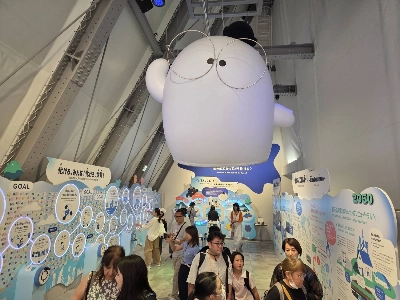Plans for a megasolar project near the Kushiro Wetlands National Park in eastern Hokkaido have run into strong local opposition after the nests of the white-tailed eagle — a rare and protected species — were discovered at the planned construction site.
The park is the country’s largest wetlands area, extending 36 kilometers from north to south, and 25 km from east to west with a total area of 22,070 hectares. It’s home to a variety of precious flora and fauna, including the red-crowned crane, which is designated as a Special Natural Monument of Japan, and the Siberian salamander, a northern-region relict species found only in certain parts of Japan.
The Kushiro wetlands were designated as Japan’s first internationally protected wetlands in 1980 under the Ramsar Convention before being designated a national park in 1987. While building within the park is restricted, the area surrounding it has been targeted in recent years for commercial development, including for solar power operations, which raises concerns about the environmental impact of such projects on the region's flora and fauna.
In December, Osaka-based Japan Ecology held a meeting in Kushiro to explain its plans for building a megasolar facility on about 27.3 hectares of land within official city limits, and within a designated urban development zone beside the designated wetlands area. At a briefing for residents in February, the second such session, the company said that its survey showed that no nests of the bird, which is also referred to as the white-tailed sea eagle, had been found within the proposed development site, though one was discovered about five to six meters away from the edge of the site.
However, a March 20 Mainichi Shimbun report about the presence of multiple nests, including old ones, within the proposed construction site led the city of Kushiro to issue a notice prohibiting entry to the area through the end of May. The notice cited the need to protect the eagle's breeding grounds, in accordance with the national law on the protection of cultural properties.
The eagle's wintering grounds encompass Hokkaido, northern Honshu, the Russia's Far East coast, the southern Kamchatka Peninsula and the Kuril Islands. Based on surveys taken between 2010 and 2020, including those by the Environment Ministry, Hokkaido officials estimate that between 700 and 1,000 white-tailed eagles overwinter in Japan, mainly in eastern Hokkaido.
In response to the no-entry notice from the city of Kushiro, Japan Ecology halted construction, but only within a 2.5-hectare area around the nests. Pressure to cancel the entire project, however, is growing from local residents and environmentalists.
On May 9, six groups calling for the halting of construction of the project presented a petition with over 67,000 signatures to Kushiro Mayor Hidenori Tsuruma, who was elected for the first time last October. He has made clear that he favors restrictions on any development that threatens the Kushiro wetlands. The online petition also had the support of 20 of 24 assembly members for the city of Kushiro.
Kushiro does not yet have a system in place that would allow it to approve or deny permits for the construction of solar power plants across the entire city. It plans to propose an ordinance to introduce such a system, but the earliest this can take place is during the city assembly's September session.
The delay has sparked concerns that the mega solar plant could still be built before any new regulation comes into force. But groups seeking to halt the project are hopeful that local officials' strict attitude might serve as a deterrent to the operator.
"Making it clear to businesses that Kushiro's stance on construction is strict will have the effect of stopping it," Fusayuki Kanda, chair of the Nature Conservation Society of Kushiro, one of the groups campaigning against the megaproject, told NHK.
“We are mobilizing all of the city's resources to move forward with the enactment of an ordinance. We also intend to move forward with the issuance of a 'No More Megasolar' declaration,” Tsuruma said on May 9.





















With your current subscription plan you can comment on stories. However, before writing your first comment, please create a display name in the Profile section of your subscriber account page.